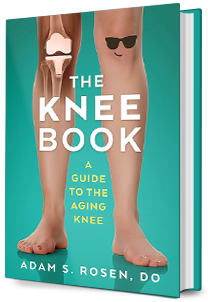Total Knee Replacement
Knee arthritis is an inflammation of the knee joint due to loss of cartilage. Arthritis may be due to wear and tear and age (osteoarthritis), injury and fractures (post-traumatic arthritis), or systemic diseases (rheumatoid arthritis or psoriatic arthritis).
Knee arthritis can lead to pain, stiffness, limp, instability, swelling and inability to be an active individual. The diagnosis is made by taking a careful history, a physical examination and x-rays. When conservative care has failed to relieve pain and symptoms a person may be a candidate for total knee replacement.
A knee replacement resurfaces the ends of the bone where cartilage is normally present. A few millimeters of bone is removed off the shin bone (tibia), the thigh bone (femur) and the knee cap (patella). Those surfaces are covered with metal and plastic. The parts are glued or cemented onto the bone.
As with any surgical procedure there are risks which may include infection, blood clots, stiffness, leg length discrepancy, pain, injury to nerves or vessels, fractures, dislocation, bleeding and/or the need for transfusions or the need for additional surgery.
Knees can wear out over time or with excessive activity. If your knee replacement wears out you may need a revision.
You can find more detailed information about knee replacement surgery, as well as information about the risks, benefits and the recovery here.






